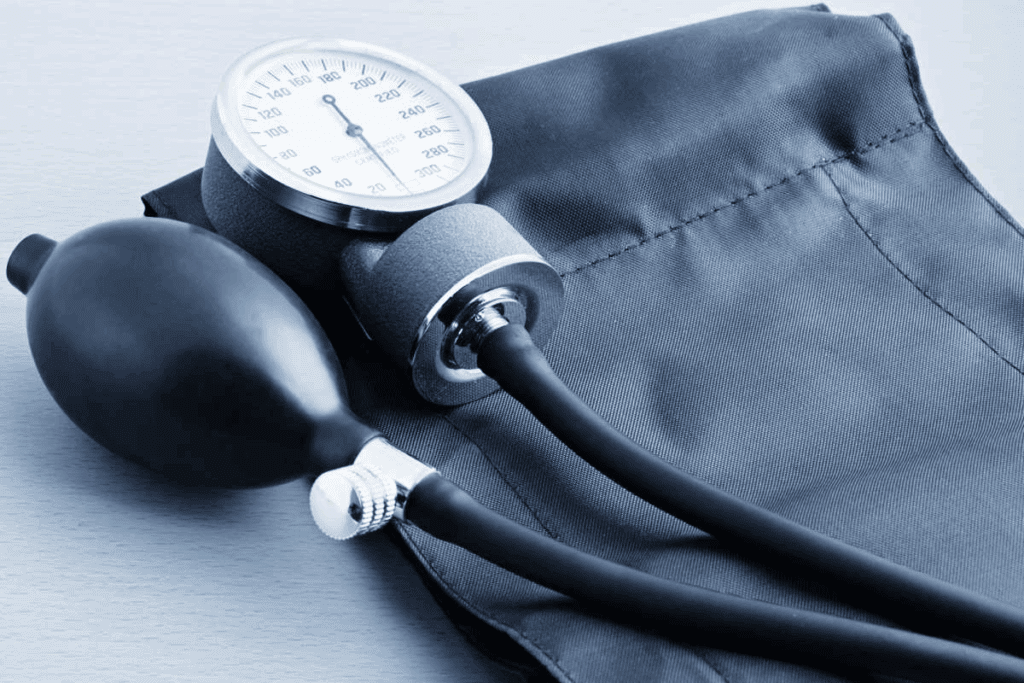
Discover what 106 72 blood pressure means, if it’s a normal reading, and what to do if it’s too low.
Knowing your blood pressure reading is key to keeping your heart healthy. A reading of 106/72 mmHg is normal for most adults, says the American Heart Association (AHA).
At Liv Hospital, we stress the need to check your blood pressure often. A 106/72 blood pressure is in the best range of 90/60 mmHg to 120/80 mmHg. This shows your heart is working well.
We will look into what this reading means for your health. We aim to give you the info you need to take care of yourself.

To grasp the importance of a blood pressure reading like 106/72, we must first understand how it’s measured. Blood pressure is recorded in millimeters of mercury (mmHg). It has two parts: systolic and diastolic. The systolic value shows the pressure in arteries when the heart beats. The diastolic value shows the pressure between heartbeats.
The systolic and diastolic values are key to understanding our heart’s health. The systolic value, the higher number, shows the maximum pressure in arteries during a heartbeat. The diastolic value, the lower number, shows the minimum pressure between heartbeats. They give us a full picture of our blood pressure.
For a reading of 106/72, the systolic is 106 mmHg, and the diastolic is 72 mmHg. This means the pressure in arteries reaches 106 mmHg during a heartbeat. It then drops to 72 mmHg between beats.
Doctors use a sphygmomanometer, a device for the upper arm, to measure blood pressure. They inflate the cuff to stop blood flow, then slowly release it while listening with a stethoscope. This method accurately measures both systolic and diastolic pressures.
Understanding how blood pressure is measured helps us see why readings like 106/72 matter. Knowing the systolic and diastolic values and how they’re measured helps us understand our heart health better.

A blood pressure reading of 106/72 might seem simple, but it tells a lot about your heart health. We’ll explore what these numbers mean and why they’re good.
The systolic reading of 106 is the top number in your blood pressure. It shows the pressure in your arteries when your heart beats. The American Heart Association says a systolic pressure under 120 is normal.
So, a systolic reading of 106 is well within the normal range. This means your heart is pumping well.
The diastolic reading of 72 is the bottom number. It shows the pressure in your arteries between heartbeats when your heart is at rest. The AHA says a diastolic reading under 80 is normal.
So, a diastolic reading of 72 is not just normal. It also means your arteries are relaxed, which is good for your heart health.
Both systolic and diastolic readings are key to understanding your blood pressure. They give a full picture of your heart’s health. A reading of 106/72 shows your heart is working well, with no immediate blood pressure concerns.
Knowing the normal blood pressure ranges is key for heart health. Blood pressure shows how well our heart works. Spotting issues early is easier when we know what’s normal.
The American Heart Association (AHA) says normal blood pressure is between 90/60 mmHg and 120/80 mmHg. A reading of 106/72 is in this range, meaning it’s healthy.
Blood pressure is divided into ranges for diagnosis and treatment. These ranges are based on systolic and diastolic values.
A reading of 106/72 is classified as normal blood pressure, according to these categories.
A blood pressure reading of 106/72 is healthy because it meets the AHA’s normal range. The systolic value of 106 is under 120, and the diastolic value of 72 is under 80. Both are signs of good heart health.
Keeping blood pressure in this range lowers the risk of heart disease and stroke. It shows the heart is working well and blood vessels are healthy.
For adults, including females, a blood pressure reading of 106/72 is a good sign. It’s important to keep checking blood pressure to stay in this healthy range.
It’s key to know what blood pressure readings mean for your health. These numbers can change due to many things like exercise, stress, and the time of day. So, it’s important to understand what readings like 106/72 mean for your heart health.
Readings like 106/73 and 106/74 are very close to 106/72. They are usually seen as healthy. The systolic number of 106 is normal. Diastolic numbers of 73 or 74 are just a bit higher than 72, but they’re okay too.
Key similarities between these readings include:
A reading of 106/77 is also close to 106/72. The diastolic number is a bit higher, but it’s okay for most adults. It’s important to look at these numbers with your overall health and other factors in mind.
Some factors to consider when evaluating these readings include:
Knowing how these factors affect blood pressure helps you understand your heart health better. This knowledge can guide you in making lifestyle choices and decisions about your medical care.
It’s key to understand how blood pressure varies among different groups. Factors like age, gender, and hormonal changes play big roles. These elements can greatly affect what your blood pressure reading shows.
Women’s blood pressure can change due to hormones. This happens during their menstrual cycle, pregnancy, and menopause. For example, blood pressure often drops in the first and second trimesters of pregnancy.
After pregnancy, blood pressure usually goes back to what it was before. A reading of 106/72 is usually okay for women. But doctors keep a close eye on it, mainly if there’s a family history of high blood pressure or heart issues.
Women are more likely to get certain types of high blood pressure, like gestational hypertension during pregnancy. So, it’s important to understand how blood pressure works in women to manage and treat it well.
Age also affects blood pressure. As we get older, our blood vessels get stiffer. This can make blood pressure readings go up. For younger adults, a reading of 106/72 is usually normal.
But as we age, what’s considered normal might change. For older adults, a slightly higher systolic reading is common. This is because their arteries aren’t as flexible as they used to be. But a diastolic reading of 72 is good for all ages. It means the heart isn’t working too hard to pump blood.
Age-related changes in blood pressure are a natural part of getting older. But it’s important to keep an eye on them to prevent and manage high blood pressure effectively.
Knowing what affects blood pressure is key to good heart health. Blood pressure changes based on lifestyle, emotions, and body rhythms.
Exercise greatly impacts blood pressure. Regular workouts can lower resting blood pressure and boost heart health. But, hard workouts can raise blood pressure temporarily.
Effects of Different Types of Exercise:
| Type of Exercise | Impact on Blood Pressure |
| Aerobic Exercise | Long-term reduction in resting blood pressure |
| Resistance Training | Temporary increase during exercise, with long-term benefits |
| High-Intensity Interval Training (HIIT) | Significant temporary increase, with long-term benefits |
Stress and anxiety quickly raise blood pressure. This is because of the body’s ‘fight or flight’ response. Long-term stress can lead to high blood pressure, or hypertension.
Managing stress with meditation, deep breathing, or yoga can lessen its blood pressure impact.
Blood pressure changes throughout the day, following the body’s natural rhythm. It usually drops at night and goes up when waking. Knowing these changes helps understand blood pressure readings.
Knowing when to worry about your blood pressure is key for heart health. Blood pressure shows how well your heart works and supplies blood. A reading like 106/72 is usually okay, but watch for signs of trouble.
Hypertension, or high blood pressure, can sneak up on you. It often has no symptoms at first. But, there are signs to look out for:
If you notice any of these, see a doctor:
Regular visits to your doctor can keep an eye on your blood pressure. If you’re worried or notice symptoms, talk to a healthcare professional.
Keeping blood pressure healthy is possible with lifestyle changes and monitoring. We know it takes effort and dedication to stay heart-healthy. A blood pressure reading like 106/72 is a goal worth working for.
To keep blood pressure in check, making some lifestyle changes is key. These include:
The DASH diet is great for your heart. It focuses on:
Checking your blood pressure at home is important. It helps catch any changes early. Here’s how to do it right:
By following these tips, you can keep your blood pressure healthy. This reduces the risk of heart disease.
We’ve looked into what a 106/72 blood pressure reading means and what affects it. Keeping your blood pressure at a healthy level, like 106/72, is vital for your heart health. It’s important to manage your blood pressure well to avoid heart diseases.
Knowing the value of blood pressure readings and how to keep them healthy can greatly improve your life. A balanced lifestyle, including a good diet and exercise, is key to heart health.
A blood pressure of 106/72 is considered healthy. Keeping your blood pressure in this range can help you live longer and healthier. We urge everyone to check their blood pressure regularly and take care of their heart health.
A blood pressure of 106/72 is a good sign. The systolic pressure is 106 mmHg, and the diastolic is 72 mmHg. This is considered healthy.
Yes, a reading of 106/72 is healthy. It falls within the normal range for adults.
The systolic value, 106, shows the pressure when the heart beats. The diastolic value, 72, shows the pressure between beats. Both are key for heart health.
Doctors use a sphygmomanometer to measure blood pressure. They wrap a cuff around the upper arm, inflate it, and then slowly deflate it to measure the pressure.
For adults, normal blood pressure is below 120/80 mmHg. A reading of 106/72 falls within this range.
Blood pressure varies by age, sex, and physical condition. Physical activity, stress, and daily changes also affect readings.
Many things can affect blood pressure readings. These include physical activity, stress, anxiety, emotional state, and daily changes. The body’s natural rhythm also plays a role.
If your blood pressure is consistently high, you should be concerned. Also, if you have health conditions, seek medical advice.
To keep blood pressure healthy, make lifestyle changes. Follow the DASH diet and monitor your blood pressure at home.
The DASH diet focuses on fruits, vegetables, whole grains, and lean protein. It helps manage blood pressure and supports heart health.
Monitor your blood pressure at home regularly. Try to do it at the same time each day to track changes.
Home monitoring lets you track your blood pressure regularly. It helps you notice changes and make health decisions.
National Health Service (NHS). (2025). What Does a 10672 Blood Pressure Reading Mean. Retrieved from https://www.nhs.uk/tests-and-treatments/blood-pressure-test/
Subscribe to our e-newsletter to stay informed about the latest innovations in the world of health and exclusive offers!
WhatsApp us